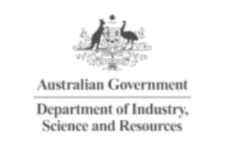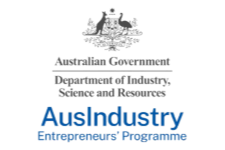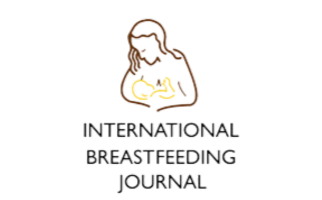FAQ
Clinical questions
Lactamo's features allow for the facilitation of a unique combination of temperature, movement and compression, specific to breastfeeding.
Temperature: Lactamo is filled with a non-toxic gel which allows for prolonged warmth and cooling as required. The benefits of the application of warmth in breast application are well documented in studies [7, 8, 9, 10 ], and include helping to address inflammation and congestion, assisting lymphatic drainage, helping relieve swelling, pain and supporting milk flow from the breast. Lactamo is specifically designed so that it can't get too hot: it can only reach a gentle warmth (similar to body temperature). Benefits of cool applications include reducing inflammation, providing relief and comfort, slowing the milk refill process, and providing maternal comfort.
Movement: Lactamo's surface is covered with both solid and hollow lumps that are designed to gently address congestion and inflammation whilst also facilitating lymphatic drainage and providing stimulation and supporting milk flow, as applicable. Lactamo has a flexible design - featuring both large and small lumps, solid and hollow – differing on each side, to cater for the varying needs of lactating breasts.
Compression: Lactamo is made with soft, 100% medical silicone, specifically matched to the elasticity of lactating breast tissue. Lactamo has been specifically designed to ensure that its hardness and compressibility is suitable for the mechanical properties and elastic modulus values of breast tissue (ranging from 0.5 kPa (lower level for adipose) to 3,000kPa (upper level for skin). The outer hardness of Lactamo ranges from 10 00 to 40 A (Shore Scale) which is incredibly soft, almost ‘jelly like’ (unlike any other breast massage device on the market). Lactamo's softness limits the amount of compression that can be applied, and was designed to avoid damage to breast tissue, as seen from other massage devices (and indeed massage done by an unqualified hand). Deep tissue massage can lead to increased inflammation, tissue swelling, and microvascular damage. Recent research highlights that while breast massage has benefits for breastfeeding, its effectiveness hinges on the practitioner's ability to perform it without causing trauma. Lactamo aims to allow users to facilitate optimal breast massage taking advantage of the well-known proactive and reactive benefits of gentle compression in breast massage, whilst avoiding the potential pitfalls of deep tissue and/or aggressive breast massage.
It’s difficult to understand how soft and elastic Lactamo is until it is held. Upon holding Lactamo, many lactation consultants comment that they are so happy that it “protects against deep tissue massage”.
Lactamo’s unique features empower mothers to easily tailor massage towards their (ever-changing) individual needs.
Extensive studies recommend breast massage in lactation and temperature (essentially, three critical components: temperature, movement and compression) for the resolution of many of the most common breastfeeding issues.
These three components have the ability to improve blood circulation, facilitate lymphatic drainage and aid in milk flow from the breast. Interesting research has shown that gentle breast massage in lactation also has the ability to increase the total solids, lipids, casein concentration and gross energy of the breast milk.
Lactamo is a cohesive aid, building on decades worth of research to flexibly and cohesively address the common issues associated with lactation.
Lactamo accommodates varying needs and is highly versatile. Depending on the needs and also the preferences Lactamo can be effectively used warm, cool, or at room temperature, as indicated in our instructions. This flexibility allows individuals to tailor the use of Lactamo to their comfort levels and needs, providing a supportive aid in managing the most common conditions (including both inflammatory and low supply) during breastfeeding.
Additionally, the intentional inclusion of varying sized solid and hollow surface lumps allows users to work to their individual (and often ever-changing) needs.
Breastfeeding challenges can change vastly throughout one’s breastfeeding journey and Lactamo aims to offer support at all stages.
Lactamo offers the unique combination of temperature, movement and compression bespoke to lactating breasts, not offered by any other breastfeeding aid.
Mindful of the acute sensitivity of breast tissue, Lactamo is the only breastfeeding solution available that is matched to the elasticity of breast tissue – which is critical not just for successful outcomes, but also to avoid damage to breast tissue. Other tools aiming to facilitate massage are often too hard or rely on vibrating functions. The latest research (including the revised ABM protocol) emphasises that the key for management and treatment of breast inflammation is to avoid excessively high intra-alveolar and intra-ductal pressures, which prevents a critical mass of mechanical strain and rupture of the tight junctions between lactocytes and ductal epithelial cells.
All of Lactamo’s components are incredibly specific to breast tissue: the design, compressibility, softness, temperature and protrusion size are controlled to ensure massage is gentle and therapeutic and does not cause further inflammation or damage to the delicate breast tissue.
Lactamo is the first and only breastfeeding aid to both proactively and reactively address the common breastfeeding problems in this clinically aligned way.
While it is possible for mums to use their hands for breast massage and lymphatic drainage, doing so effectively requires specialized skill and technique. Lactation consultants we have spoken to report that most women struggle to achieve the desired results when using their hands alone. In many cases, they unknowingly apply excessive pressure, which can lead to damage and trauma rather than relief.
The challenges of using hands alone:
- Compression: Mums often use too much force when massaging their breasts with their hands. It is well documented that deep tissue massage is inappropriate for breasts, causing damage and trauma. Lactamo has been specifically designed to ensure that its hardness and compressibility is suitable for the mechanical properties and elastic modulus values of breast tissue, thereby facilitating only gentle therapeutic breast massage.
- Temperature: Mums’ hands are usually not the required temperature for the specific presenting lactation requirement. The benefits of temperature (warm or cool) are well known and vary with different lactation needs. Lactamo gives mums the ability to incorporate and benefit from the temperature requirement specific to their preference and (ever changing) needs.
- Movement: Mums aren’t usually skilled in the specific techniques of breast massage and lymphatic drainage. Recent research highlights that while breast massage has benefits for breastfeeding, its effectiveness hinges on the practitioner's ability to perform it without causing trauma. Lactamo’s comprehensive instructions have been developed by highly qualified professionals and practitioners (including lactation consultants, lymphatic experts, osteopaths, and qualified Oketani practitioners). The guides that we have developed provide step by step instructions aimed at empowering Mums to utilise the best techniques for breast massage and lymphatic drainage. Feedback from lymphatic drainage practitioners in particular is that Lactamo allows for a slower and more targeted movement, and allows more areas to be reached.
The application of gentle warmth has a wide range of benefits for breastfeeding, including:
- Improved milk flow
- Increased circulation
- Heightening oxytocin
- Increased maternal comfort
The application of heat in the context of inflammatory conditions during breastfeeding, such as engorgement, blocked ducts, and mastitis, is a nuanced topic. The recently updated “Academy of Breastfeeding Medicine Clinical Protocol #36: The Mastitis Spectrum, Revised 2022” (ABM protocol) highlights that while heat can cause vasodilation and potentially exacerbate symptoms for some conditions, it also may offer comfort to others. We therefore include guidance recommending that users work to their personal preference, using warmth if comfortable (only in restricted and specific inflammatory contexts), and also note that warmth should be avoided for acute conditions.
Importantly, Lactamo only facilitates gentle warmth (similar to body temperature), not heat, and is specifically designed so that it can't get too hot. The temperature of Lactamo is also able to be easily adjusted to suit the individual needs by adjusting the temperature of the water that is used to heat it.
When a warmed Lactamo is used for breast massage this is aimed at assisting with milk removal by increasing circulation within the breast, in conjunction with stimulating the hormonal release of oxytocin which causes the milk ejection reflex. Oxytocin also contributes to feelings of relaxation, which further supports the removal of breastmilk.
When Lactamo is used in the absence of inflammation the gentle warmth is used to stimulate the let-down reflex and support milk removal during feeding. Breast massage with heat has been shown to promote relaxation and aid in the stimulation of milk production.
Lactamo accommodates varying needs: depending on a Mum’s preference Lactamo can be effectively used warm, cool, or at room temperature, as indicated in our instructions. This flexibility allows individuals to tailor the use of Lactamo to their comfort levels and needs, providing a supportive aid in managing all conditions (including inflammatory conditions) during breastfeeding.
Note: in our instructions we often talk about "heating" Lactamo: users are able to heat Lactamo, but the design intentionally limits the maximum temperature achievable to a gentle warmth.
There have been numerous significant studies showing the benefits of gentle breast massage for breastfeeding, including [7, 8, 9, 10]. Separately, deep tissue massage is completely different and is not suitable and can lead to increased inflammation, tissue swelling and trauma, and microvascular damage.
Lactamo has been specifically designed to avoid deep tissue massage. Its softness and compressibility are designed specifically for the mechanical properties and elastic modulus values of breast tissue (ranging from 0.5 kPa (lower level for adipose) to 3,000kPa (upper level for skin), to facilitate only gentle breast massage. The outer hardness of Lactamo ranges from 10 00 to 40 A (Shore Scale) which is incredibly soft, almost ‘jelly like’ (unlike any other breast massage device on the market). It’s difficult to understand how soft and elastic Lactamo is until it is held. Upon holding Lactamo, many lactation consultants remark that they are happily surprised at the incredibly soft nature of Lactamo.
Recent research highlights that while breast massage has benefits for breastfeeding, its effectiveness hinges on the practitioner's ability to perform it.
Lactamo and our instructions have been developed and designed by a team of healthcare professionals including lactation consultants, breast surgeons, osteopaths, lymphatic experts and qualified Oketani practitioners, with special attention to alignment with the most current medical research, and also with instructions that cohesively support its use.
Previous advice on breast massage techniques for inflammatory conditions focused on aggressive massage to ‘dislodge a clog’ through firm pressure on the area. The ABM protocol now supports a focus on inflammation reduction through relieving breast congestion. Lactamo's instructions for conditions on the mastitis spectrum (including engorgement, blocked ducts and mastitis) recommend starting with massage for lymphatic drainage. Our instructions guide mothers through the evidence-based steps to perform lymphatic drainage, which directly correlate with the lymphatic drainage techniques highlighted in the latest research.
These steps involve activating the lymph nodes that are responsible for draining additional breast fluid (supraclavicular, internal mammary and axillary lymph nodes). The steps also involve techniques which assist with the movement of additional fluid towards the appropriate lymph nodes to assist with removal.
During feeding, some parts of Lactamo’s instructions direct users to massage towards the nipple: this is not aimed at ‘dislodging clogs’, but rather at enhancing milk flow (especially in areas of the breast that are less inflamed or congested) following lymphatic drainage. Lactamo’s focus is on light touch massage with the appropriate technique.
Lactamo’s instructions are the product of careful consultation with input from a large number of HCP experts including IBCLCs, lymphatic specialists, and specialised osteopaths, ensuring alignment with the latest research, and in particular aligning with the latest ABM protocol. Lactamo aims to offer a simple tool to breastfeeding mothers allowing them to more easily incorporate breast massage into their daily routine, taking advantage of the well-known proactive and reactive benefits of breast massage (and temperature), whilst avoiding the pitfalls of deep tissue and/or aggressive breast massage.
Detailed instructions for each breastfeeding condition can be found in the Lactamo instructions both online and in the Lactamo box’s accompanying leaflet, allowing mothers to follow and apply these techniques safely and effectively.
Breast massage and warmth can be beneficial tools for expectant mothers, particularly as they approach the later stages of pregnancy. Breast massage and warmth can help mothers prepare for breastfeeding as part of antenatal hand expressing once they reach term and with approval from their healthcare provider. This practice not only aids in acquiring skills for effective milk expression postpartum but also can enhance the mother’s confidence and feelings of empowerment regarding her ability to breastfeed.
Gentle breast massage and warmth supports stimulation of the let-down reflex, a critical aspect of successful breastfeeding. This stimulation promotes the release of oxytocin triggering the muscles in the breasts to contract and release colostrum.
Incorporating gentle breast massage and warmth into prenatal care can be an effective way for expectant mothers to become acquainted with breastfeeding techniques and to ease the transition into breastfeeding once the baby arrives.
In our instructions we always caution users to seek guidance from their healthcare professional, if in doubt.
These three factors can play a very positive role in managing low milk supply, which is a common concern among breastfeeding mothers. Breast massage and nipple stimulation are non-invasive therapeutic techniques that support the physiological processes for efficient milk production.
Nipple stimulation promotes the release of oxytocin from the posterior pituitary gland. Oxytocin is an integral hormone for breastfeeding and specifically stimulates the milk-ejection reflex, otherwise known as “let-down”. Nipple stimulation with Lactamo may also assist with drawing out inverted nipples prior to the commencement of a breastfeed.
Breast massage and warmth is aimed at supporting the dilation of the blood vessels, thereby improving blood flow to the breast. Increased circulation not only supports the milk flow but also supports essential hormones, such as prolactin and oxytocin, reaching the mammary glands more effectively. Oxytocin, in particular, is critical as it directly triggers the muscles in the breasts to contract and release milk, facilitating a more robust let-down reflex, as mentioned previously. This approach is supported by the latest breastfeeding research that breast massage increases the milk flow and accelerates the onset of lactation in the early postpartum period.
Using gentle compression during feeding or expressing has been shown to improve milk removal by up to 48%.
Lactamo facilitates breast massage and can be gently heated and rolled over the breast including over the nipple prior to feeding. The elasticity of Lactamo has been specifically developed and designed to be optimal for lactating breast tissue, to support and facilitate the appropriate level of compression.
By incorporating breast massage into lactation support protocols, healthcare professionals can offer a non-invasive, scientifically supported method to help mothers increase their milk supply, thus supporting better breastfeeding outcomes and maternal satisfaction.
Lactamo is specifically designed to assist breastfeeding mothers to facilitate effective lymphatic drainage through gentle breast massage.
In the context of breastfeeding, effective lymphatic drainage can help reduce the risk of engorgement ,mastitis and other forms of inflammation by improving fluid circulation and reducing swelling and congestion within the breast. Unlike the circulatory system, the lymphatic system does not have a pump. Instead, it relies on the movement of muscles and manual manipulation to move fluid. The axillary lymph nodes are the primary drainage site for the breast, handling 75% to 80% of its lymph. The remaining 20% to 25% of lymph from the breast drains into the supraclavicular and internal mammary lymph nodes..
Lactamo’s instructions outline methods to firstly activate the appropriate lymph nodes and secondly, to promote the fluid movement towards these for appropriate removal. This is achieved by using Lactamo in rolling motions directed towards the lymph nodes. It is aimed at helping channel excess lymph fluid away from the engorged breast tissue towards regions where the body's lymphatic system can more efficiently process it.
One of the key features of Lactamo is its design that mimics the gentle pressure akin to stroking a baby's face. This gentle approach is crucial because research has shown that too much pressure during breast massage can cause microvascular injury and other complications. Lactamo has been designed to prevent these risks, with the aim of taking advantage of the well-known proactive and reactive benefits of massage, whilst avoiding the pitfalls of deep tissue and/or aggressive massage.
A cooled Lactamo is best for lymphatic drainage as the cool assists the smooth muscles within lymphatic vessels to rhythmically contract in order to push lymph along.
Women experiencing hyperlactation are more susceptible to a myriad of breastfeeding complications such as breast pain, engorgement, blocked ducts and mastitis. This is due to ductal narrowing caused by oedema and hyperemia. Additionally, hyperlactation is a primary risk factor for developing mastitis and predisposes patients to luminal congestion and inflammation, which in turn facilitates mammary dysbiosis.
Lymphatic drainage is well documented as an effective management technique to address fluid congestion and inflammation in the breast. It also assists with improving circulation within the breast and addresses discomforts associated with hyperlactation.
Application of a cooled Lactamo on any particularly inflamed and/or painful areas of the breast post and between
feeding/expressing is aimed at reducing inflammation and easing discomfort.
We specify that Lactamo should not be used for oversupply whilst breastfeeding/expressing. This is to avoid unnecessary stimulation with Lactamo. Mothers who have an oversupply most often than not have a very forceful milk-ejection reflex which can be further exacerbated by stimulating the breasts. A strong let-down can also overwhelm the breastfeeding babe.
Yes, research supports that the techniques and properties of Lactamo can be highly beneficial for mothers who are exclusively expressing. The trials and studies on Lactamo also supports this.
Oxytocin, the hormone responsible for the let-down reflex, is primarily activated by the action of baby suckling at the breast. It can also be triggered via nipple stimulation. In turn, this promotes milk removal from the breast. Thus, use of Lactamo for nipple stimulation prior to expressing is supportive of promoting oxytocin release and the milk ejection reflex.
Facilitating breast massage with Lactamo whilst expressing has been clinically proven to increase the amount of breast milk collected in a shorter pumping duration.
Both of these factors have been of particular importance for mothers who are exclusively expressing breast milk for their babies enduring extended admissions in the Neonatal Intensive Care Unit (NICU), in particular due to extreme prematurity or neonatal medical condition. These mothers often forego periods of separation from their baby, which can negatively impact the production and release of oxytocin.
When warmed in hot water, the temperature of Lactamo can be varied by the temperature of the water that is used to heat it. The user is advised to test the temperature by gently rolling Lactamo in their hands before applying to the breast. The appropriate temperature is subjective, therefore it is important that the user finds the temperature that is most comfortable for them. This can be achieved by adjusting the temperature of the water used for heating Lactamo. It is important to highlight that Lactamo only facilitates gentle warmth (similar to body temperature), not heat, and is specifically designed to not get too hot for lactating breasts.
As reported in current research warmth is used to support movement of fluids within the breast and many women find it offers comfort.
Additionally, the mechanism of breast massage as a whole is also beneficial without warmth, and women often use Lactamo at ambient temperature.
Being evidence based and clinically validated is of utmost importance to Lactamo, and we spent a number of years verifying this alignment. Lactamo has been developed and designed by a team of healthcare professionals including lactation consultants, breast surgeons, osteopaths and lymphatic experts, with special attention to alignment with the most current medical research.
Extensive research has been done on Lactamo with incredible results. An independent clinical trial done by Deakin University and the Western Health Partnership was published in the International Breastfeeding Journal and concluded that "Lactamo is a valuable breastfeeding aid". Hospital Pilots in 2024 reported that Lactamo demonstrated "unprecedented results", resolving 90% of all breastfeeding problems with ease and efficiency.
Additionally, Lactamo’s instructions have been meticulously reviewed by numerous healthcare professionals, to ensure the optimal use and approach, and an evidence based alignment. We recognise that medical research and best practices continue to evolve and we maintain an ongoing commitment to review the latest research regularly. We always welcome further feedback, especially evidence-based feedback from healthcare professionals.
Lactamo can be reused between patients for demonstrations and use in hospitals. It can be cleaned by submerging it in boiling water and/or using antibacterial/alcohol based wipes.
We recognise the importance of staying current with the latest research in lactation and breast health and understand that the term 'ductal narrowing' is now considered a more accurate description of the condition previously known as 'blocked ducts.' This update reflects a deeper understanding of the physiological and anatomical characteristics of mammary ducts, influenced by recent findings in ultrasound studies and histological examinations as noted in the latest update to the Academy of Breastfeeding Medicine.
Despite these advancements, the term 'blocked ducts' is a term that many healthcare providers continue to use and is widely recognised by women seeking support for breastfeeding issues.
Our primary goal is to ensure that the information we provide is accessible and useful to the women who need it most. By using the term 'blocked ducts,' we acknowledge the common language used by many women when they seek help for this issue.
Regardless of the term used, the instructions and use of Lactamo is in line with the latest research, focusing on addressing ‘ductal narrowing’.
Lactamo is designed with the user's comfort and safety in mind, which is why it is filled with a non-toxic food-safe gel. Lactamo is specifically engineered to remain ultra-soft and squishy, even under cold temperatures. This material does not freeze solid in a standard freezer and will retain its soft and squishy jelly-like form.
Lactamo is made of medical-grade silicone and is latex free. Despite being allergy free, if users don’t like the idea of something directly touching their breast then Lactamo can be rolled over the top of the user’s clothes.
Lactamo is made of medical silicone and is latex free. Lactamo is designed to be applied directly on the skin. Despite being allergy free, if users are averse to the sensation of Lactamo directly touching their breast then Lactamo can be rolled over the top of their clothing.
The instructions have been developed with a team of independent experts including lactation consultants, breast surgeons, osteopaths and lymphatic experts . Many of these professionals specialise in managing common breastfeeding challenges through breast massage, making their contributions invaluable in developing practical, user-friendly guidelines. The team actively incorporated findings from current research, including updates on the mastitis spectrum, to ensure that the instructions are scientifically sound and reflect the latest in clinical practice.
It is noted that Lactamo's lymphatic drainage techniques directly correlate with the descriptive diagrams highlighted in the updated ABM Protocol and also with other well documented research.
We recognize that medical research and best practices continue to evolve and we maintain an ongoing commitment to review the latest research regularly. We always welcome further feedback, especially evidence-based feedback from healthcare professionals. This ongoing process ensures that the information we provide, and the recommendations we make, remain current, accurate, and aligned with the best available evidence.
By relying on expert input and current research, we strive to ensure that Lactamo is a reliable and effective tool for managing breastfeeding-related challenges.
- La Leche League International. Improve global breastfeeding practices. 2021. Available at: https://www.llli.org/2021-world-health-day-improve-global-breastfeeding-practices/. Accessed on: 13/02/2023.
- Sweet L & Vasilevski V. Int Breastfeed J 2022; 17(23):1-9.
- Anderson L et al., JBI Database System Rev Implement Rep 2019; 17(8):1668-1694.
- Witt AMet al., J Hum Lact 2016; 32(1):123-131.
- Foda M et al., J Pediatr Gastroenterol Nutr 2004; 38(5):484-487.
- Crepinsek MAet al., Cochrane Database of Systematic Reviews. 2020 Sep 29;9(9).
- Zakarija-Grkovic I & Stewart F. Cochrane Database Syst Rev. 2020;9
- Yigit Fet al., Breastfeed Med. 2012;7(6):487–488.
- Kent JCet al., J Obstet Gynecol Neonatal Nurs. 2012;41(1):114–121.
- Brodribb W. Breastfeeding Management in Australia. 5. East Malvern: Australian Breastfeeding Association; 2019.
- Morton et al., J Perinatol. 2009 Nov;29(11):757-64.
- Katmini, K., & Sholichah, N. M, Journal for Quality in Public Health, 2020. 4(1), 104–113.
- Watcharaphao N et al., HSCR . 2021 Jun. 30
- Khan YS et al., In: StatPearls [Internet]. Treasure Island (FL): StatPearls Publishing; 2024 Jan
- Mitchell K et al., Breastfeeding Medicine.2022;17(5):360-376.
- Johnson HM et al., Breastfeed Med. 2020;15:129-134.
General questions
Lactamo is available at: www.lactamo.com
We’d love to chat to you. Contact us at: hello@lactamo.com.
We are always interested in connecting with breastfeeding supporters, and always welcome enquiries from HCPs. We recognise breastfeeding is an area of varied thoughts and opinions, with many different approaches. Working together, we believe we can better support our mission to give mothers the best success and experience in breastfeeding (if they choose to breastfeed).
Please contact us at: hello@lactamo.com, and one of our team will get in touch.
Yes. If you are interested in stockingLactamo, please contact us at: hello@lactamo.com, and one of our team will be in touch.
We are currently looking at ways to provide ongoing educational content and we'd love to hear your thoughts. If you have ideas on content you'd like to see and the best ways for you to receive it and/or if you’d like to be involved in developing this with us, please email us on hello@lactamo.com
Leading Innovation for breastfeeding
Awards and recognition

Business NSW
"Outstanding Startup" 2021

TEDxSydney
“Best New Business
Idea" 2020

MedTech Actuator
Award Australia & India 2019

Awarded Australian Government funding from the Department of Industry, Science and Resources 2022

Awarded Federal Government Funding under the Boosting Female Founders Initiative 2024

“A valuable breastfeeding aid” 2022



